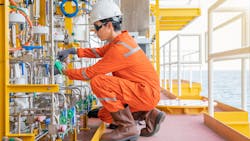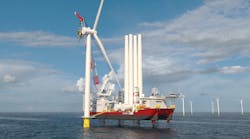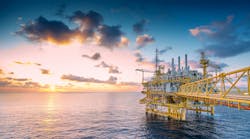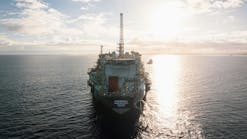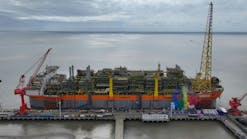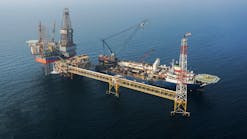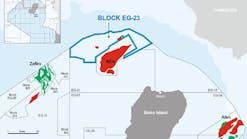Reducing environmental impact: seven key challenges facing floating production facilities
By Matt Tremblay, ABS Vice President, Global Offshore
As global industry wrestles with the challenges of delivering the energy transition, significant attention has been focused on the production of cleaner energy from renewable sources to fuel sweeping decarbonization efforts.
However, if any net zero or global warming targets are to be met, we also need to factor in how to make current practices in key energy sectors such as oil and gas more sustainable.
Vital infrastructure serving the offshore oil and gas industry such as floating production installations also warrants attention – floating, production, storage, and offloading (FPSOs), floating, storage, and offloading (FSOs), spars, tension leg platforms (TLPs), and semisubmersibles are just some examples.
Floating production installations assist in the production, storage and transportation of hydrocarbons.
Why do they matter in net zero circles? Put simply, these offshore installations are important because of their operational characteristics and contribution of emissions and greenhouse gases, namely carbon dioxide (CO2), methane (CH4), fluorinated gases, nitrous oxide (NOx) and sulfur oxide (SOx).
Seven key challenges
In a recent white paper, “Emissions Reduction Insights for FPIs,” ABS explored some of the major challenges faced in reducing emissions from floating production installations (FPIs).
Even as the momentum towards sustainable operations increases, so does the search for oil in offshore environments. Thus, new FPIs will be needed. If the industry can address some of the emissions-related challenges, the sector can contribute to global decarbonization efforts.
Below are seven important issues that will need to be addressed.
1. Offshore application of technologies
Floating production installations face unique limitations and constraints, as comparted to onshore production facilities.
This is especially true when the offshore facilities are sited remote deepwater or ultra-deepwater locations. In these environments, the topsides production footprint is often limited due to space constrictions. This creates obstacles for accommodating additional equipment that otherwise would be able to operate on land.
To reduce emissions from an FPI requires the adoption of new or redesigned technologies that can be used for offshore applications.
2. Conventional methods generate emissions
Most installations use gas turbines to generate electricity to power vital equipment such as compressors. This energy generation contributes to roughly 80% of all CO2 emissions from offshore activities, a situation which is exacerbated by the fact that these turbines often have a low efficiency rating.
Operators can ameliorate methane emissions by returning excess produced gas back into the power generation system. But even though the gas turbine method provides a better alternative to flaring, emissions are still generated by the power production process. The use of emissions-capturing technology, or post-combustion emissions treatment processes, should therefore be considered to improve sustainability credentials.
3. Venting releases harmful gases
Hydrocarbons and other harmful gases are released into the atmosphere during venting, a process which takes place during loading and unloading of cargo tanks.
The composition of these vapors depends on the crude oil in the tanks and various processes aboard the vessel – indeed, the amount of hydrocarbon that is mixed with the inert gas depends on many variables. It may vary from total inert gas with a combination of nitrogen, carbon dioxide, oxygen and traces of NOx and SOx to complete hydrocarbon mixtures.
Pressurized systems and some loading phases may involve higher concentration levels of hydrocarbons, with vapors being cold vented into the atmosphere if there are no emissions control systems installed.
While there is heavily regulated guidance relating to venting, attention does need to be paid to operations and technologies that can reduce or even eliminate the need to vent such gas mixtures. Technology examples can include gas turbine replacement, flaring reduction methods, gas reinjection, gas capture and export, and flare combustion efficiency. From an operations perspective, such examples could include improved maintenance programs and equipment upgrades.
4. Excess gas can result in flaring
Flaring (the burning of excess gas) can occur for many reasons. The most common factors include a lack of local market capacity or demand, lack of storage and transportation systems, government tax incentives, operational challenges, original design limitations, and changing reservoir performance.
Flaring emits GHGs to the atmosphere. During the process, methane is oxidized to carbon dioxide and water through combustion. While this method is more favorable than venting, as CO2 is less impactful than methane as a GHG over a longer time span, methane may still escape unburned depending on the efficiency of the equipment and gas composition.
5. Unplanned emissions can occur
Another challenge associated with offshore production installations is the release of what is commonly referred to as fugitive emissions.
These are unplanned events whereby hydrocarbon gases and vapors are released into the atmosphere, and they can be associated with leaks, or come from faulty equipment or other operational issues. Specifically, fugitive gases may be released during maintenance; or from piping joint leakage, valve leakage; faulty equipment; relief valve discharge; and flaring operations.
6. Waste and water disposal
Water is produced and utilized during and for various operations on offshore production installations and should be treated before disposal. Whether it’s produced water, hydrostatic testing water, cooling water, desalination brine, and other wastewater like sewage or food waste, there is potential to cause serious harm if not managed appropriately.
Meanwhile, hazardous materials such as chemicals, trash (gloves, rags, pads), oily water, paints, coatings, and solvents should be either disposed of or recycled properly. Processes and equipment maintenance should also be optimized to reduce the risk of hazardous waste spillages and help protect marine life.
7. Noise disruption
Topside equipment and associated supply vessel operations of floating production installations can generate considerable noise. This can lead to a domino effect of problems – by fleeing noisy areas, marine creatures’ habitats are shrunk and vital activities such as migration, food gathering and breeding are disrupted. As a result, populations could decline and reduce ocean biodiversity.
Whether it is noise pollution, gas flaring, or use of inefficient turbines to generate energy to power equipment, there are a range of challenges that operators of floating offshore production installations need to address.
There are solutions to help overcome these issues. Producers can site their platforms in areas far away from marine life natural habitats or animal migration routes. They can also employ new analytical techniques and risk assessment measures to identify potential impact upon sea life, prior to production operations. These measures are also covered in detail in ABS’s white paper, which contains practical steps and insights on technologies which, in combination, could help transform the sustainable credentials of the sector. By taking even some of these steps, operators can demonstrate that offshore oil and gas can contribute to a cleaner energy industry for all.
